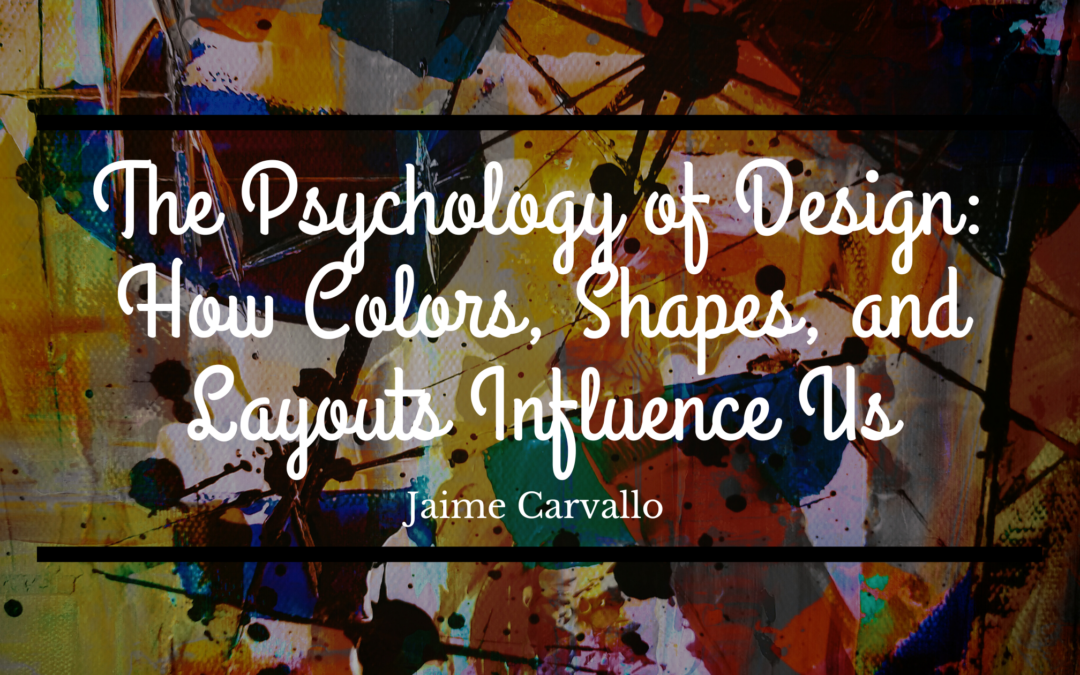Introduction
Have you ever walked into a space and instantly felt relaxed? Or clicked on a website and felt compelled to explore further? That’s the psychology of design at work. Every color, shape, and layout we encounter influences our emotions, decisions, and interactions.
Understanding the psychology behind design helps businesses, brands, and individuals create experiences that resonate with their audience. Whether it’s a product, a website, or an interior space, good design isn’t just about looks—it’s about how it makes us feel.
In this blog, we’ll explore how colors, shapes, and layouts affect human psychology and how you can use them effectively in your own designs.
The Power of Color in Design
Color plays a significant role in shaping our perceptions and emotions. Different colors evoke different feelings, which is why brands and designers carefully select color palettes that align with their messaging.
Common Color Associations
- Red → Passion, urgency, excitement (Used in sales, fast food chains)
- Blue → Trust, stability, calmness (Used by banks, tech companies)
- Green → Growth, nature, health (Used by eco-friendly brands, health products)
- Yellow → Optimism, happiness, energy (Used in marketing to grab attention)
- Black → Luxury, sophistication, power (Used in high-end brands, fashion)
- White → Simplicity, cleanliness, purity (Used in minimalistic designs, medical fields)
How to Use Colors Effectively
- Branding: Choose colors that align with your brand personality and values.
- Web Design: Use contrasting colors to highlight important elements (e.g., CTA buttons).
- Interior Design: Warm colors make spaces feel cozy, while cool colors create a sense of calm.
The Influence of Shapes in Design
Shapes carry subconscious meanings, influencing how we perceive products, logos, and layouts.
Common Shape Meanings
- Circles & Ovals → Unity, harmony, community (Used in social media logos like Facebook, Instagram)
- Squares & Rectangles → Stability, strength, reliability (Used in corporate branding, architecture)
- Triangles → Direction, movement, innovation (Used in tech and automotive industries)
- Curved Lines → Softness, approachability, friendliness
- Sharp Angles → Edginess, power, aggression
How to Use Shapes Effectively
- Logo Design: Use rounded shapes for friendly branding and angular shapes for strong, bold identities.
- Product Design: Rounded products feel more approachable, while sharp edges create a high-tech appeal.
- UI/UX Design: Circular buttons and soft edges improve user experience by making digital interfaces feel more welcoming.
The Psychology of Layout & Composition
The way elements are arranged in a design significantly affects readability, usability, and user engagement.
Key Layout Principles
1. The Rule of Thirds
A visual guideline that divides a design into nine equal parts to create a balanced composition. Used in photography, web design, and branding.
2. White Space (Negative Space)
Leaving empty space around elements improves readability and aesthetics. Minimalist designs use negative space effectively to create a clean look.
3. Visual Hierarchy
Arranging elements by importance guides the viewer’s eye naturally. Bigger and bolder elements draw attention first.
4. The F-Pattern & Z-Pattern
Users scan content in predictable patterns:
- F-Pattern: Common in text-heavy content (blogs, news websites).
- Z-Pattern: Used in landing pages and ads to direct attention efficiently.
Real-World Examples of Psychology in Design
1. McDonald’s (Color Psychology)
McDonald’s uses red and yellow to create excitement and stimulate appetite, encouraging quick dining.
2. Apple (Minimalist Design)
Apple’s simple layouts and clean use of white space create a luxurious, premium feel.
3. Nike (Shape & Typography)
The Nike swoosh logo is a perfect example of movement and energy, reinforcing the brand’s dynamic and athletic identity.
How to Apply Design Psychology in Your Work
- Choose colors that evoke the right emotions for your brand or project.
- Use shapes strategically to reinforce brand values and identity.
- Apply effective layouts to improve user engagement and readability.
- Test your designs—see how people react and refine accordingly.
Final Thoughts
Great design is more than just aesthetics; it’s a powerful tool that influences emotions, behaviors, and decisions. By understanding the psychology behind colors, shapes, and layouts, you can create more impactful, meaningful designs that connect with people on a deeper level.

